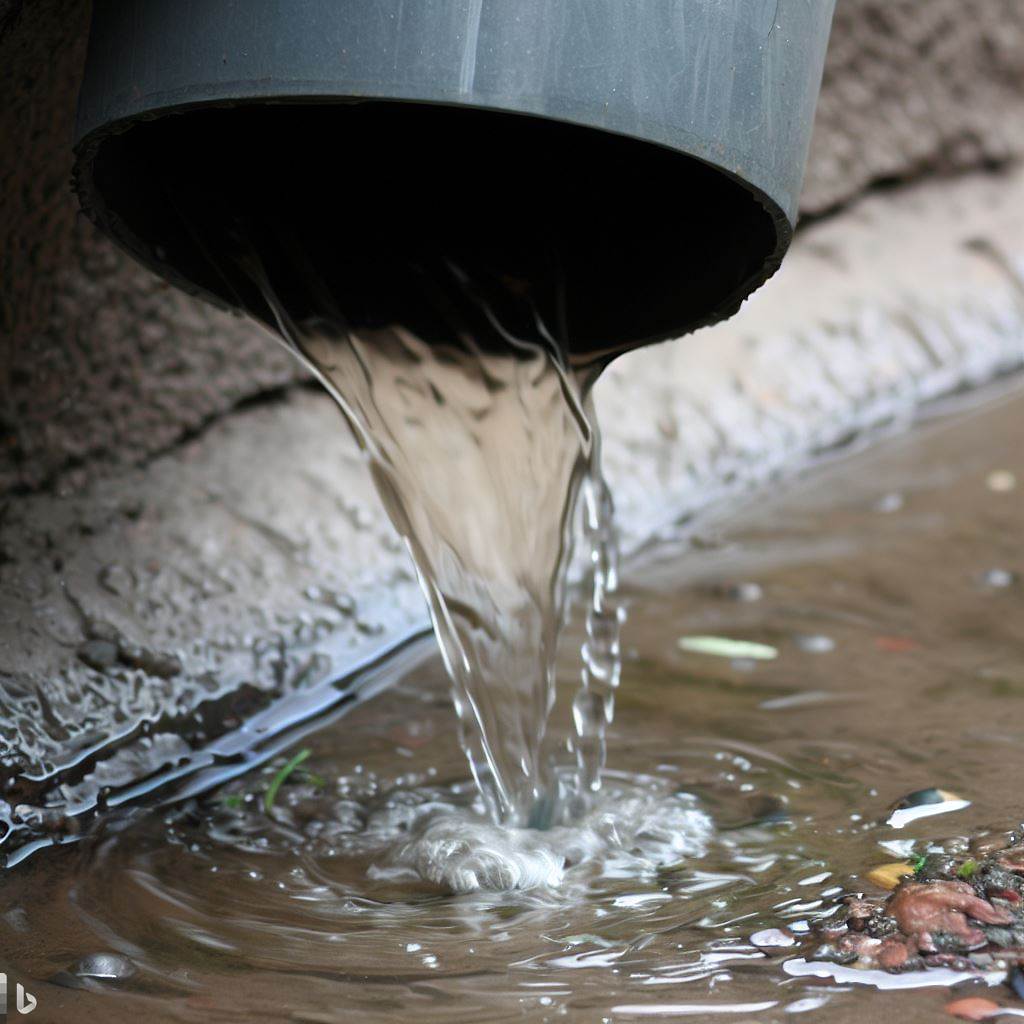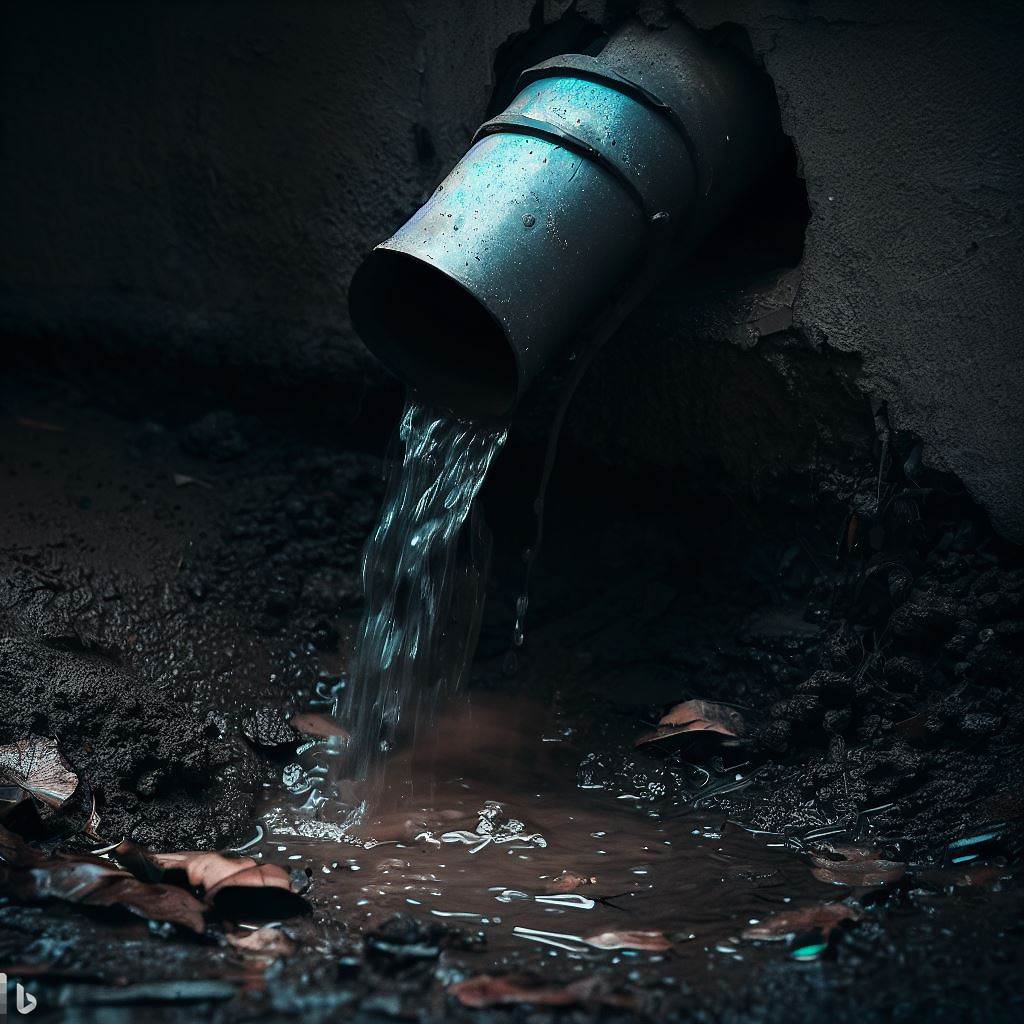When it comes to home maintenance, we often overlook the importance of downspout management. If you’ve ever had a basement flood or landscape erosion, here’s your golden ticket: an underground downspout.
Oh, how I wish we’d sing praises for these hidden heroes more frequently! Their intricate labyrinth beneath your garden not only directs water away from foundations but also prevents destructive soil erosion. Therefore, imagine the inconvenience when you have an underground downspout overflow problem that gets in the way.
So grab your hard hat and shovel as we go underground into the world of downspouts! You’ll be amazed at what these simple tools can do for you – saving you costly repairs while keeping Mother Nature in check. Buckle up folks; it’s time to dig deep into this fascinating subject matter… Quite literally!
Recognizing Signs of Underground Downspout Overflow
When it comes to managing rainwater, many homeowners rely on underground downspouts to divert water away from their homes’ foundations.

However, these underground systems can sometimes experience overflow issues, leading to potential basement flooding and other problems. Understanding the signs of underground downspout overflow is crucial in preventing further damage.
One common sign of an overflowing underground downspout is water pooling near the foundation of your home after rainfall.
Additionally, you may notice dampness or water stains on your basement walls or floor. In some cases, you might even see cracks forming in your foundation due to prolonged exposure to excess moisture.
Causes of Underground Downspout Overflows
Several factors can contribute to an overflowing underground downspout system. One primary cause is a clogged or blocked gutter that prevents efficient drainage.
Accumulated debris such as leaves, twigs, and dirt can hinder the flow of water through the downspouts and into the ground.
Another factor that leads to overflow is inadequate sizing or positioning of the underground drain pipes. If these pipes are not able to handle a significant volume of water or if they are improperly sloped, it can result in backups and subsequent overflows during heavy rains.
Preventative Measures for Downspout Overflow Problems
To prevent future issues with your underground downspouts overflowing, there are several preventative measures you can take:
1) Regularly clean out your gutters: Removing debris from your gutters will help ensure proper flow into the downspouts and minimize blockages.
2) Install gutter guards: Gutter guards act as barriers against leaves and other debris entering your gutters while allowing rainwater through freely.
3) Use downspout diverters and adapters: These devices help to redirect water away from your home’s foundation and prevent overflow. They can be installed at the end of the downspout or along its length.
Proper Installation and Maintenance of Underground Downspouts
The proper installation and maintenance of underground downspouts are critical in preventing overflow issues. Here are some guidelines to follow:
1) Ensure sufficient pipe size
Use pipes with an adequate diameter to handle the expected volume of water flow. Larger pipes can accommodate more significant amounts of rainfall without overflowing.
2) Check for proper slope
The underground drain pipes should be positioned with a downward slope away from your home’s foundation, allowing gravity to assist in draining excess water.
3) Regularly inspect for blockages
Periodically check for any obstructions or signs of clogs in the underground drains. Clear out debris using an auger or pressure washer if necessary.
Solutions to Fixing an Overflowing Underground Downspout
If you’re already experiencing issues with your underground downspout system overflowing, there are several solutions you can consider:
1) Extend the downspouts above ground level: By directing the flow of water above ground, you can prevent it from pooling near your foundation and causing overflow problems.
2) Install additional drainage systems: Consider adding surface drains or French drains around areas prone to excessive rainwater accumulation. These systems will help collect and divert excess water away from your property.
3) Consult a professional plumber or landscaper: If DIY solutions aren’t resolving the problem, it may be best to seek expert advice. A professional can assess your specific situation and recommend tailored solutions based on their expertise.
Impact of Environmental Factors on Underground Downspouts
Environmental factors such as heavy rainfall patterns, soil composition, and landscape topography play a significant role in the performance of your underground downspout system.
Thus, understanding how these factors affect drainage can help you make informed decisions regarding preventative measures and solutions.
Again, during periods of intense rainfall, it’s essential to ensure your downspouts are adequately prepared to handle the increased volume of water. Regular maintenance and cleaning become even more critical during these times to prevent overflow.
Role of Soil Conditions in Drainage Issues
Soil composition and condition also impact the effectiveness of underground downspouts. Different types of soil, such as clay or sandy soil, have varying absorption capacities.
Clay soils retain moisture for longer periods, making them prone to oversaturation and potential overflow issues.

To address this, consider amending your soil with organic matter or installing additional drainage options like gravel beds around the foundation area. These measures can improve water infiltration rates and reduce the risk of overflow.
Summary
Recognizing signs of underground downspout overflow is crucial in preventing further damage to your home’s foundation and basement flooding.
By implementing proper installation techniques, performing regular maintenance, considering environmental factors, and addressing soil conditions appropriately, you can effectively prevent and fix overflowing underground downspouts.
Remember that seeking professional advice may be necessary if DIY methods fail to resolve the issue satisfactorily
FAQs
Q: What is an underground downspout overflow?
A: An underground downspout overflow occurs when the drain connected to your underground gutter system becomes clogged, causing water to back up and overflow.
Q: How can I prevent an underground downspout overflow?
A: To prevent an underground downspout overflow, you can regularly clean and maintain your gutter system to prevent clogs. Additionally, installing downspout extensions can help redirect water away from your home and prevent overflow.
Q: What are the signs that my underground drain is clogged?
A: Signs that your underground drain is clogged include water pouring from the downspout adapter seams, water pooling around your underground drain, and overflowing gutters. You may also notice water seeping into your basement or foundation.
Q: How can I fix a clogged underground drain?
A: Fixing a clogged underground drain can be a challenging task. It’s best to call a professional gutter service to assess the situation and provide the appropriate solution. They have the experience and tools necessary to unclog the drain without causing damage to your system.
Q: Can I use a drain cleaner to unclog my underground drain?
A: It is not recommended to use drain cleaners to unclog your underground drain. These chemicals can be corrosive and may damage your gutter system or sewer line. It’s best to leave the job to a professional who can use safe and effective methods.
Q: How do I know if my underground drain is connected to my sewer line?
A: If your underground drain is connected to your sewer line, you may notice water coming up from the drain when you flush the toilet or run water down the sink. This is a sign of a clogged sewer line and requires immediate attention from a plumber.
Q: What should I do if I see water pouring from the downspout adapter seams?
A: If you see water pouring from the downspout adapter seams, it is likely that your underground drain is clogged. You should contact a gutter pro to inspect and unclog the drain as soon as possible.
Q: How can I tell if my underground drain is clogged?
A: You can tell if your underground drain is clogged if you notice water pooling around your underground drain or if you see water pouring from the downspout adapter. Overflowing gutters are also a sign of a clogged underground drain.
Q: What are the common causes of a clogged underground drain?
A: Some common causes of a clogged underground drain include leaves, debris, and dirt accumulation in the gutter system. Additionally, damaged gutter sections or misaligned downspouts can cause water to flow into the drain system, leading to clogs.
Q: Why is it important to fix a clogged underground drain?
A: It is important to fix a clogged underground drain because it can cause water to seep into your basement or foundation, leading to costly damage. It can also result in overflowing gutters, which can damage your home’s exterior and landscaping.
